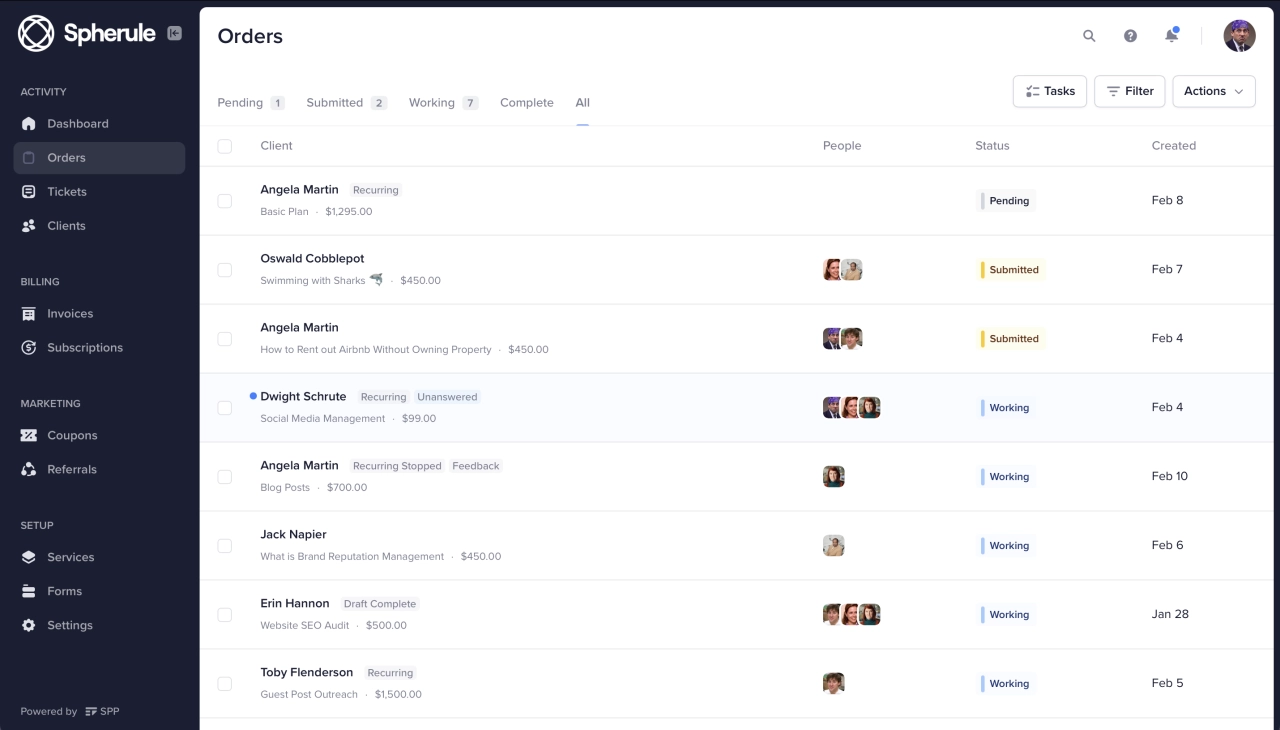- Understanding your target audience’s needs is crucial for in order to be able to generates leads through content.
- Clearly define your objectives in content marketing, such as increasing sales, generating leads, or building an email list.
- Tailor your content to the different stages of the buyer’s journey and the search intent of your target audience.
Content marketing can be an amazing tool in any company’s arsenal. Most business leaders are aware that it helps with brand recognition, customer loyalty, and product awareness. Beyond that, however, content can also help with customer lead generation, including having a direct impact on the revenue of a company.
But how do you move past the awareness stage and start generating leads with content marketing?
Define a persona
Content marketing doesn’t happen in a void. It’s an act of communication—and, depending on which channels you choose, it can even be a two-way conversation. Before you start creating content, it’s important to understand who your target audience is. You should determine what their needs, wants, and pain points are, so you can effectively create content that speaks to them.
To see who your ideal customer is, do the following:
Dig into website and social media analytics to see who is likely to interact with your content the most.
Run customer interviews or surveys to get a better understanding of who you’re targeting.
Research your competitors and see what content resonates with their audiences.
Kick-start a market research survey to learn more about the type of content people want to consume.

Creating a buyer persona will help you to understand who your audience is and what type of content they are looking for. This should be the foundation of your content marketing strategy, as it will help you to create content that resonates with your target audience. It also makes them more likely to become active, warm leads.
Define your goals
One of the biggest mistakes in content marketing is not defining clear, obtainable objectives. Ask yourself what you want to accomplish. It could be
increasing sales by 20%,
generating 500 leads in a month, or
building an email list of 1,000 subscribers.
Content marketing can help with all these things (and it can be measured too). But if you publish blog posts sporadically, without a plan and without goals, you won’t be able to track progress or even measure success.
Think of it this way: if you want to be fitter, you’ll start by measuring where you are now—and then you will set a goal for yourself. Maybe you can do two push-ups, maybe you can do twenty—the idea is you know where you stand and you know where you want to go.
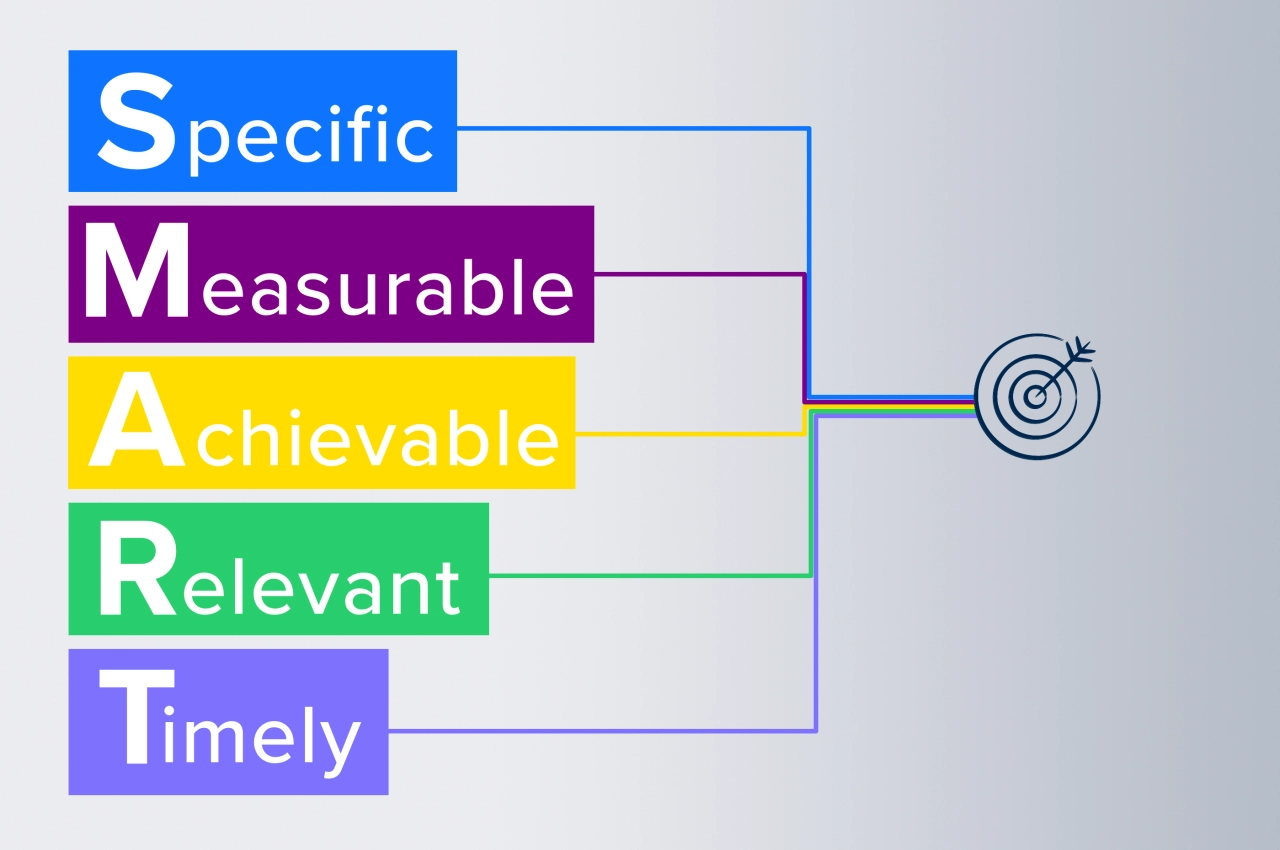
SMART (S – Specific, M – Measurable, A – Attainable, R – Relevant, T – Timely) goals are essential for any type of endeavor, and content marketing makes no exception. Examples of SMART goals in content marketing include:
publish 3 blog posts each week and increase website traffic by 10% within 4 months
generate 500 leads in six months by creating gated content
send 4 email newsletters each month and increase open rate by 15%
Once you have your goals in place, it’s time to roll up your sleeves and start the work.
Get your tool stack in order
In theory, you only need Google Docs and a blog to do content marketing.
In practice, you will likely want to measure the results of your efforts, make the process as efficient as possible, and ensure smooth collaboration between the different stakeholders involved in content creation.
Here are some of the tools you might want to consider.
Process
The secret to building content marketing that actually works is having a process in place.
You need to have an understanding of where ideas come from, who they are for, and what you can do with them. As such, building a process based on transparency, collaboration, and feedback is essential for success.
To make sure that happen, you will need:
agency project management tool (Trello, Asana, Jira, etc.)
documentation tool (Outline, Notion, Confluence, etc.)
writing (Grammarly, HemingwayApp, CoSchedule’s Headline Analyzer)
file management (Google Drive, Dropbox, etc.)
publishing (WordPress, Statamic, Medium, etc.)
social media marketing tools (Hootsuite, Buffer, etc.)
email marketing tools (Mailchimp, ActiveCampaign, Convertkit)
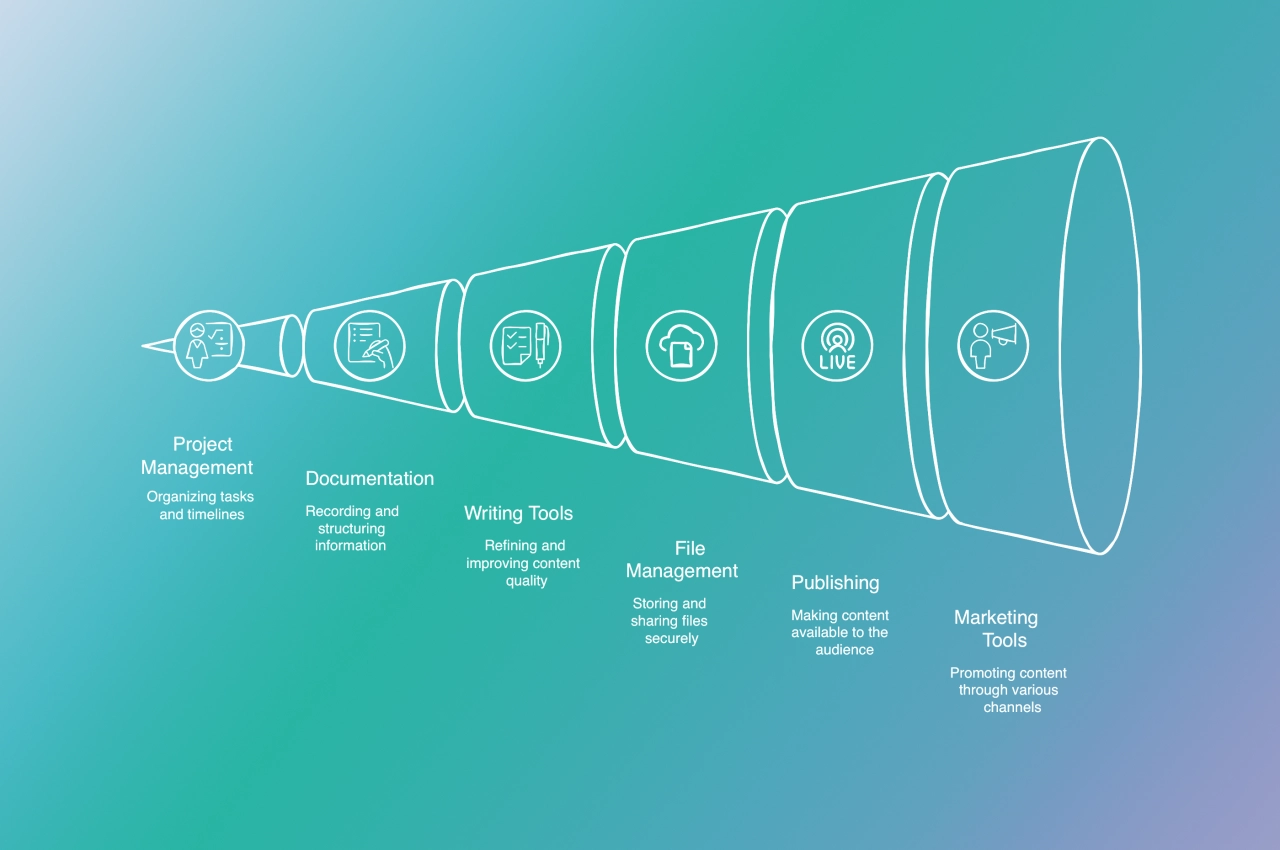
Data & Analytics
You want to make sure your content efforts are data-driven, so you should also include some analytics tools in your stack. Some of the most commonly used ones include:
SEO tools (like Semrush, Ahrefs, SurferSEO, NeuronWriter, etc.)
Google Search Console
heat mapping tools (such as CrazyEgg or Hotjar)
Facebook Insights
Twitter Analytics
Design
People are far more likely to consume content if it looks nice and is designed to be easy to understand. To create high-quality design assets, you will need:
a vector image subscription
a stock image subscription
an easy design tool (such as Canva, Figma, etc.)
And if you plan on creating videos or podcasts, you may need tools for that too (such as Adobe Premiere, Final Cut Pro, Audacity).
Hit the search intent
Search engine optimization remains one of the least expensive (and most efficient) ways to ensure your content reaches its intended audience. To make sure that your content is optimized for search engines, you will have to do keyword research.
Normally, you will want to look for keywords with higher volume and low competition, but if you want to do SEO content marketing for lead generation, you will also want to focus on search intent. In essence, search intent is about understanding why people search for certain things, and what they are trying to get answered.
Once you have an idea of what your target audience is looking for, create content to match their intent. There are four main types of search intent:
Informational: people looking for information about a certain topic
Navigational: people looking for a specific website, page, or site section
Transactional: people looking for a product or service to purchase
Commercial: people comparing different products or services
By understanding and optimizing for search intent, you can increase the visibility of your content in the SERPs, and not just for the awareness stage of the buyer’s journey, but for the consideration and decision stages too.
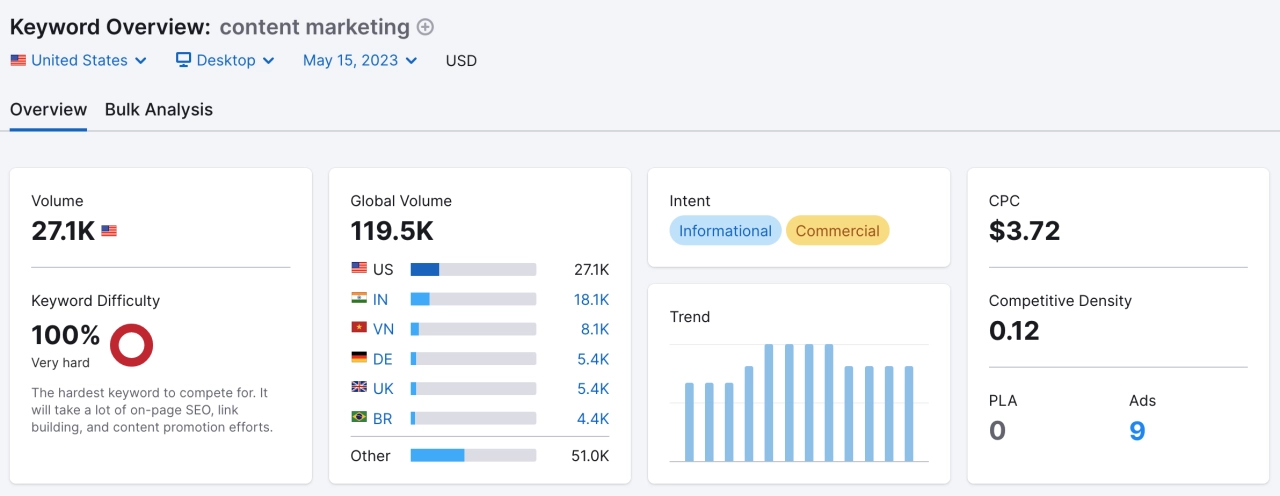
By the way, if you’re using Semrush, you can see the search intent for every keyword. This makes it easier to focus your research on the keywords you prefer targeting.
Regularly update content
In content marketing, regularly updating your material is important if you want to stay relevant with your your online presence. Outdated or stagnant content can lead to decreased engagement and conversions, ultimately affecting your business goals.
A content audit is essential for identifying outdated content that needs attention, such as articles from over five years ago that may still be relevant but require updates with new research or industry developments. Regularly updating existing content not only keeps it fresh and engaging but also enhances its SEO performance.
To ensure consistent updates, consider creating an editorial content calendar to plan and organize your content strategy. This helps you stay focused, prioritize topics, and allocate resources effectively. By regularly reviewing and updating your content, you can adapt to changing audience needs, trends, and industry shifts, ultimately driving more traffic, leads, and conversions for your business.
Personalize your content
While having up-to-date content is beneficial, personalized content is even more effective. To create truly personalized experiences, begin with data-driven insights.
Analytics tools can assist you in collecting information about your audience’s:
Behavioral patterns: How they engage with your content, website, or social media channels.
Demographic characteristics: Age, location, interests, and more.
Historical interactions: Previous purchases, engagement levels, and conversion rates.
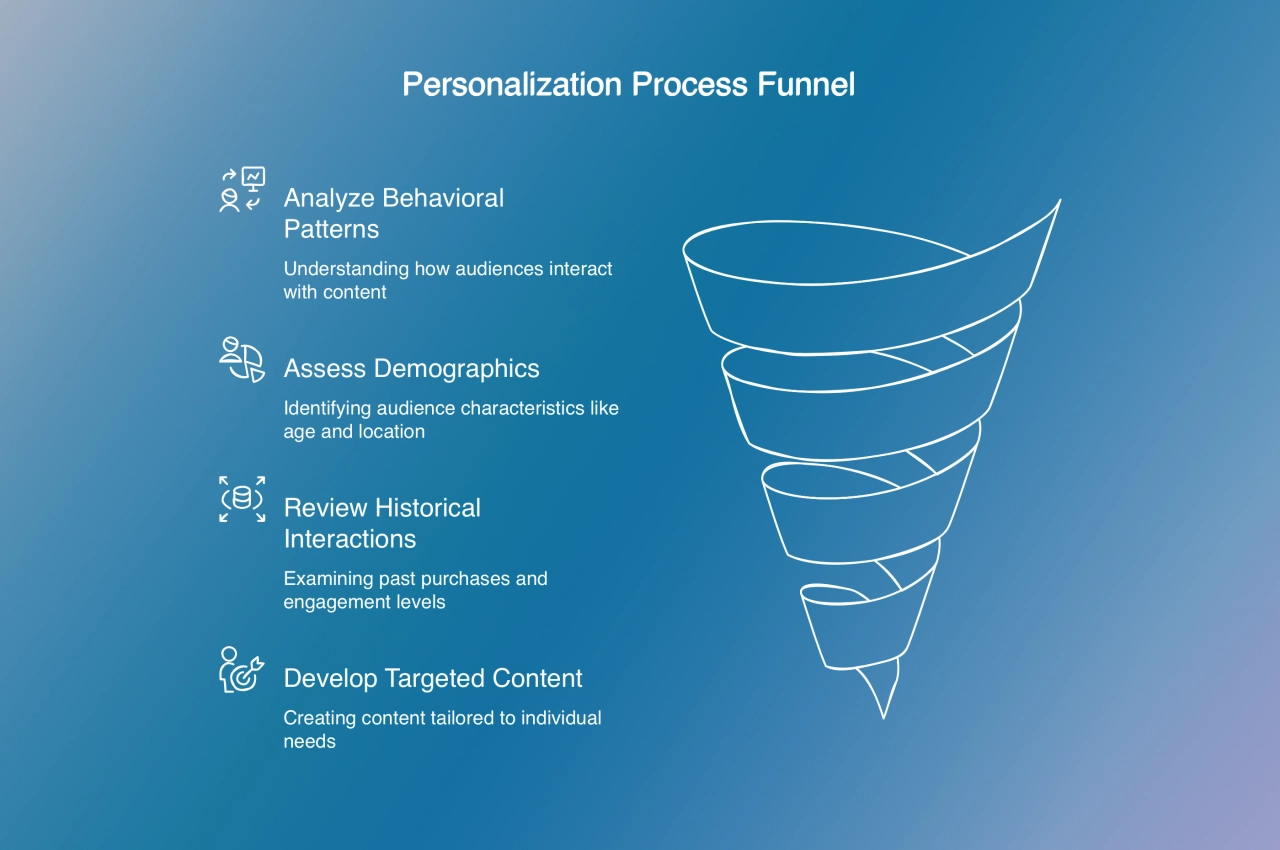
With this data, you can develop targeted content that directly addresses each individual's needs, preferences, and challenges. This may include:
customizing subject lines or email preheads for specific segments
generating personalized product recommendations based on purchase history
delivering personalized video ads with relevant messages
Integrating personalized content across channels
Personalization is an ongoing process requiring integration across multiple marketing channels.
To maximize your lead generation efforts:
Use personalization at every touchpoint: From email to social media, website content to paid advertising.
Create a unified customer profile: Ensure consistent data collection and usage for each customer.
Monitor and adjust: Continuously analyze performance metrics and refine your personalization strategy based on the results.
Optimize your content for conversion
Understanding the buyer’s journey is crucial for creating content that converts. The journey is not always linear, and customers may transition between stages depending on their unique needs and circumstances. To maximize your content’s impact, tailor it to align with both the customer journey and their intent.
Use diverse formats
To stay ahead of the curve in lead generation, businesses must think outside the box when it comes to content formats. Incorporate diverse formats, such as:
video explanations
infographics highlighting key statistics
podcasts featuring industry experts
interactive quizzes and assessments
Experiment with different formats regularly to see what resonates best with your audience. Try:
Blog posts vs. social media posts: Which performs better in terms of engagement?
Email newsletters vs. webinars: What types of content drive more conversions?
Create high-quality resources
To attract potential leads, offer valuable, actionable content that addresses their pain points and questions. Examples of effective lead magnet resources include:
E-books and whitepapers: Customized for different stages of the buyer’s journey, providing in-depth insights.
Customer-focused content: Articles and guides specifically designed to address pain points.
Case studies: Showcasing real-world applications and success stories.
Webinar-based reports: Educational content derived from live events or expert discussions.
Educational guides: Resources that answer common questions.
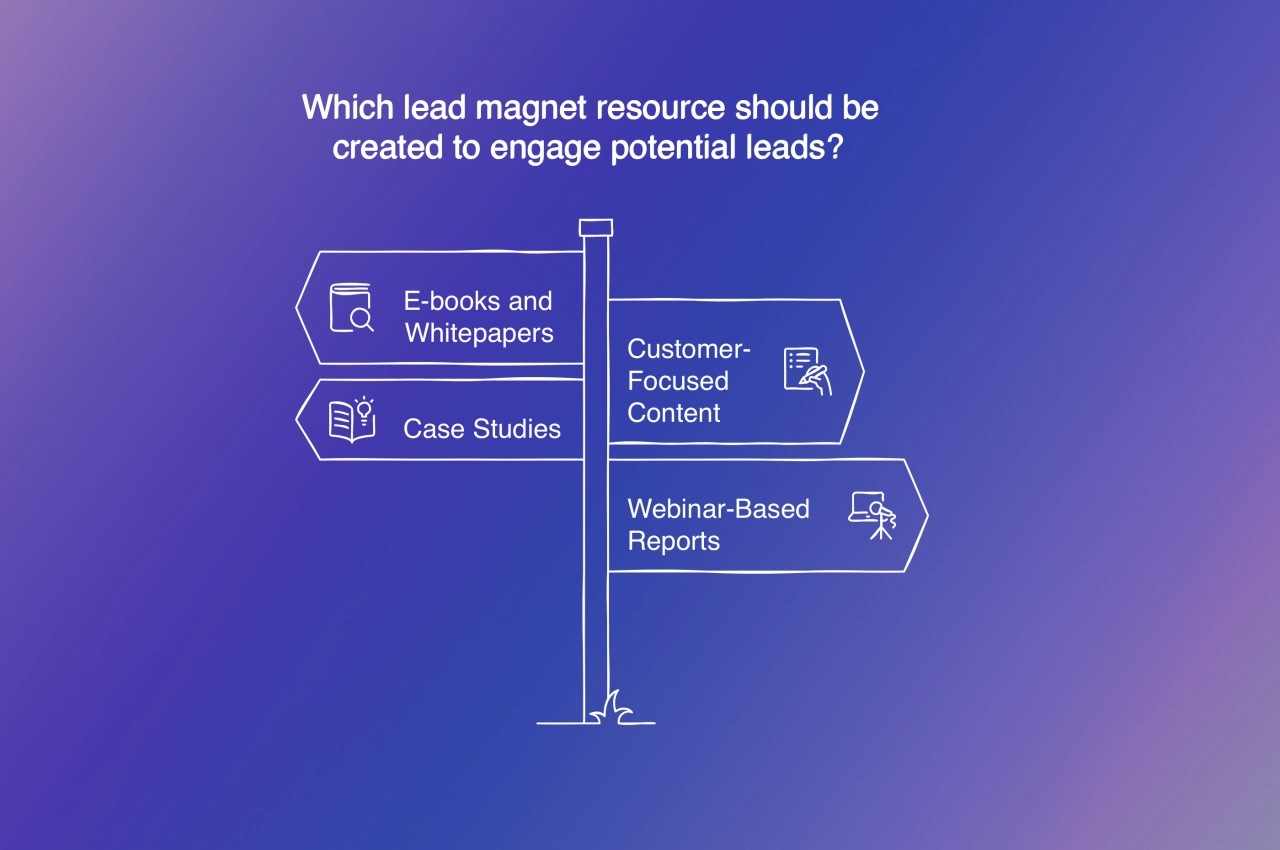
By linking these resources to related blog posts, you can guide visitors from the awareness stage to deeper engagement and consideration.
Utilize strategic CTAs
An effective CTA can turn a passive reader into a qualified lead. Integrate compelling CTAs throughout your content to steer users toward conversion.
Use persuasive language: Opt for action-oriented phrases like “Download Now,” “Get Your Free Guide,” or “Learn More.”
Design for visibility: Make sure CTAs stand out visually with contrasting colors and clear fonts.
Experiment with formats: Try different types of CTAs, such as buttons, pop-ups, or in-line text links.
Optimize placement: Position CTAs strategically within the content—consider the beginning for immediate engagement, the middle to reinforce interest, and the end for final persuasion.
The key is to make use of specific lead magnets that your target leads might be interested in. This could be ebooks, webinars, or templates.
Nurture leads effectively
Once people engage with your CTAs and download resources, follow up using an automated lead generation system. Nurture these leads by addressing their needs and demonstrating how your solutions can help them. Avoid pushing for an immediate sale; instead, focus on relationship-building.
For instance, imagine you’re an SEO freelancer:
A potential lead searches for “best way to get more traffic to your website” on Google.
Your well-optimized article ranks first, and they click on it.
They read the content and encounter a CTA prompting them to download your comprehensive SEO e-book.
After downloading, they receive a carefully crafted email sequence:
Email 1: Thank you and a brief introduction.
Email 2: Actionable SEO tips.
Email 3: A case study showcasing your client’s success.
Email 4: An invitation for a consultation.
Through this sequence, they recognize your expertise and the value you offer. When they decide to hire an SEO professional, you’ll likely be their first choice.
Diversify your content distribution
While search engine optimization is an effective distribution channel, it shouldn’t be your only one. The right channels can make or break your campaign's effectiveness in driving leads and conversions.
Content syndication strategies
Consider distributing your content across various platforms to extend its reach. This includes:
guest blogging on relevant sites
publishing on industry-specific forums and social media groups
repurposing content into different formats (e.g., transforming blog posts into videos or infographics)
utilizing paid advertising networks like Taboola, Outbrain, or Disqus
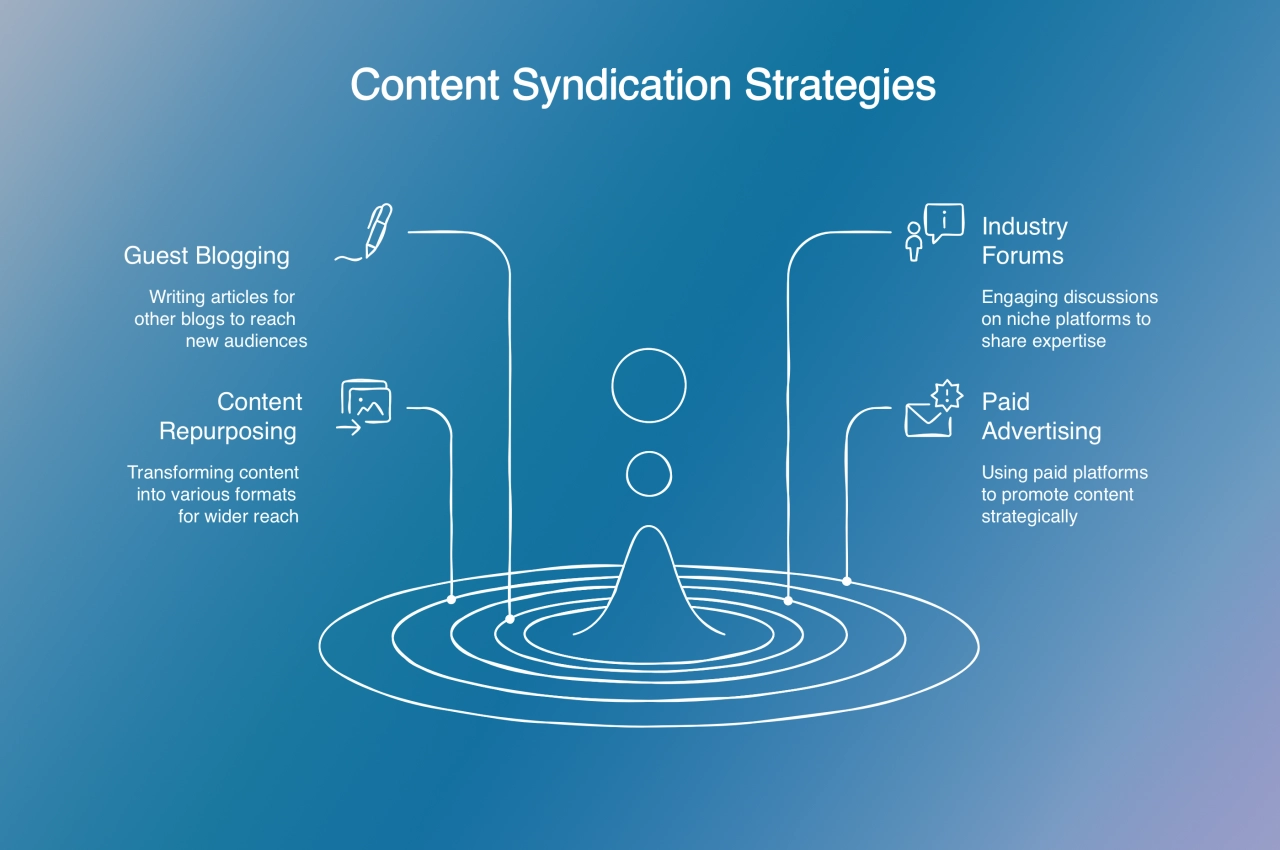
Choosing the right channels
Not all channels are equal. When choosing distribution channels for your lead generation campaign:
Align with your target audience: Ensure the channel you select is where your ideal customer spends their time.
Consider your content type: Different formats and styles are more effective in specific environments (e.g., video on YouTube, blog posts on LinkedIn).
Evaluate ROI: Select channels that provide a strong return on investment.
Influencer marketing
Collaborating with influencers can effectively distribute your content and reach new audiences. Influencers:
have established trust with their followers
can produce engaging, high-quality content
often maintain existing relationships with brands or businesses in the industry
When engaging with influencers, prioritize mutually beneficial partnerships that align with your lead generation objectives.
Measure the effectiveness of your content efforts
According to Content Marketing Institute, 94% of the top most successful content marketers measure the results of their content marketing efforts.
It makes sense: you can’t know if something’s working if you don’t measure it. And while some elements of content marketing are hard to measure, plenty can be tracked. Some of the most important content marketing metrics to measure include the following.
Traffic, impressions, clicks in SERPs
These SEO metrics are the foundation of all search-oriented content marketing efforts. Using Google Analytics and Google Search Console, you can track these numbers and assess your content marketing efforts, as well as adjust when needed.
For example, you may find that some articles have a lot of impressions, but no clicks. This may mean that you need to make tweaks to the content, like adding more visuals to make it more appealing and clickable.
Likewise, you may find that some articles have no traffic at all, despite your best efforts to optimize them. In this case, you may need to make adjustments to the FAQ schema, main keyword, adjacent keywords, and the structure of your articles.
Bounce rates
A bounce rate shows you how many of your visitors left your page without taking any action. If you have a high bounce rate, it means people aren’t finding what they’re looking for on your page—and thus, you probably have issues with the quality of your content or how well it fits the search intent.
Time spent engaging with content
Measuring how much time people spend engaging with your content is a great way to know if it’s textually heavy enough to keep their attention and satisfy their needs. As such, measuring the average time on page is a great way to assess which content formats are more successful at engaging people and helping them find what they need.
Number of shares, likes, and comments
Sometimes it’s not just enough to measure the hard metrics—you also need to look at engagement. Seeing how many people are sharing, liking, and commenting on your content is a great way to see if it’s resonating with them, and whether it’s serving its purpose.
Lead generation downloads
Offering potential customers downloadable content in exchange for their email addresses can bring more clarity to your marketing efforts. By tracking the number of downloads for each piece of content, you can get an idea of which formats are more successful at capturing leads.
Conversion rate
Your conversion rate is defined as the percentage of people who completed a desired action after reading your content. It’s a great way to measure the effectiveness of your content in converting leads and helping them find the information they need.
Keep in mind that there are multiple ways to define a conversion in content marketing. For example, you could define “hard conversions” (i.e., when someone fills out a contact form or makes a purchase) and “soft conversions” (when someone signs up for your email list downloads an asset, or shares your content).
Email open rates and click-through rates
If you run a newsletter (and you should), measuring email metrics is essential to assess the quality of your content, as well as its effectiveness at engaging people. Using email tracking tools, you can measure open rates, click-through rates, and other metrics to assess how engaged your subscribers are with your content.
Frequently asked questions
What is the best timeframe to report on content-to-lead generation?
Report content performance on multiple timeframes: weekly for immediate metrics (traffic, engagement), monthly for lead attribution and conversion tracking, and quarterly for long-term ROI analysis. Content typically takes 90-180 days to show full lead generation impact, so include both short-term engagement metrics and long-term conversion tracking.
How does content marketing support the lead generation funnel?
Content marketing attracts prospects through search and social visibility (awareness stage), educates them with valuable resources (consideration stage), and nurtures them toward conversion (decision stage). Use blog posts for SEO, downloadable guides for lead capture, case studies for credibility, and email sequences for nurturing qualified leads.
Conclusion
Effective content marketing requires thoughtful planning and execution. By creating valuable resources, utilizing compelling CTAs, and distributing content strategically, you can attract and convert leads while building long-term relationships. Keep optimizing your approach to stay aligned with your audience’s evolving needs.














